Advancing Toward Sustainability: A Systematic Review of Circular Economy Strategies in the Textile Industry
Abstract
:1. Introduction
2. Methodology
2.1. Inclusion Criteria and Article Selection
2.2. Quality Appraisal and Data Extraction
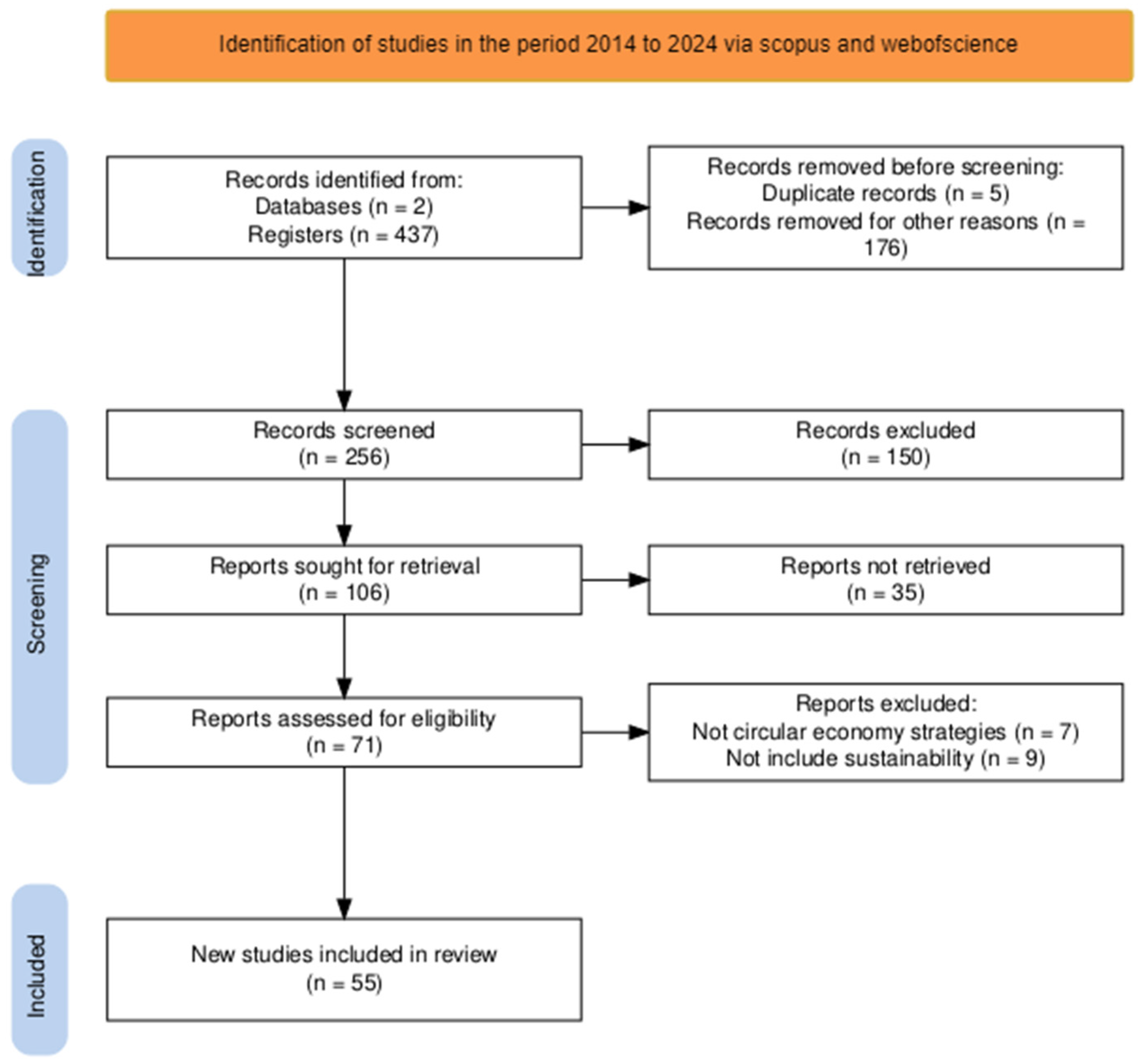
2.3. Analysis of Data
3. Results
3.1. Geographic Context
3.2. Circular Economy Strategies
3.2.1. Recycling
3.2.2. Reuse
3.2.3. Repair
3.2.4. Reduction or Rental
3.3. Scale and Scope of Studies
3.4. Environmental, Economic, and Social Perspective
4. Discussion
4.1. Recycling: Challenges and Opportunities
4.2. Reuse: Challenges and Opportunities
4.3. Repair: Challenges and Opportunities
4.4. Other Circular Economy Strategies in the Textile Industry
5. Conclusions
Funding
Conflicts of Interest
Appendix A
| Source/Strategies | Method | Environmental | Social | Economic | Appraised Quality |
|---|---|---|---|---|---|
| [6] Reuse and reprocessing | Enhanced understanding of circular economy approaches in the textile and fashion industry toward sustainability. | Energy and water consumption, as well as causing toxic chemical pollution of water, soil degradation, greenhouse gas emissions, and waste. | Health issues, repetitive, monotonous processes in workers, and ethical issues such as low pay rates, lack of basic facilities, and forced labor. | Prevention of waste overproduction and obtaining full value from products. | Moderate |
| [7] Reuse and recycling | Surveys conducted between December 2022 and January 2023. Survey research and correlational study. Data evaluation. | Use of raw materials and greenhouse gas emissions. Use of pesticides in large quantities, which end up in wastewater. | Social innovations address changes in social components, such as innovations in customer offerings that change customer behavior, and organizational change within the company, such as changes in responsibilities. | In sustainable business models, value is also created in environmental and/or social aspects. The latter encompasses value capture, i.e., how the company generates income and what its strategy is. | Moderate |
| [8] Recycling | (1) Literature review. (2) Case selection. (3) Instrumentation and data collection. (4) Data analysis. (5) Report writing. | Utilization of large quantities of water and chemicals and generation of waste. | Minimize inventories and improve customer service. | A well-designed RSC (Reverse Supply Chain) could be economically viable and cost-efficient. | High |
| [12] Reuse and recycling | Holistic summary of types, sizes, total quantity, quality, and reusability capacity of pre-consumer waste. | Increasing material efficiency (minimizing waste and manufacturing in an organized manner). | Specific business strategic plan, giving to the environment and society. | A higher priority than revenue and creating eco-friendly products through waste reuse or recycling. | High |
| [28] Reuse and recycling | Case study to investigate contemporary phenomena. | Efficient use of resources, such as minimizing losses. Selection of materials (i.e., eco-friendly fibers and recyclable/recycled technical materials). | Integrated and regenerative models that prioritize material selection, collaborative product design, supply chains integrated with distributors, and commitment to customers. | Implementing circularity through dynamic capabilities based on the Resource-Based View. | High |
| [35] Reuse | Focus group method. Use of Qualitative Data Analysis (QDA) Miner software. | Strategies for organizations to promote a more environmentally friendly position in society. | Consumer participation in the return of post-consumer clothing products. | Strategies to encourage product returns focused on the consumer’s role. | High |
| [36] Reuse, Recycling, Reduction | Life cycle assessment is complemented by the evaluation of environmental and health risks associated with different options. | It is possible to significantly reduce (37%) environmental impact by reducing washing frequency. | Actions are needed from the consumer, such as design solutions and transparent data sharing. | Moderate | |
| [37] Reuse and repair | Qualitative comparison of cases. Relationship between a constantly changing second-hand market and a socially just circular economy. | Environmental impacts associated with the consumption of new clothing: CO2 emissions, chemical pollution, and the use of water and land. | Providing affordable housing and protecting an ecosystem. | Higher levels of economic equality compared to the linear economy. | High |
| [38] Reuse, recycling, reduction, repair | Qualitative study using multiple methods, with a focus on the Netherlands as a case study. | The environmental impacts of production and consumption (e.g., waste). | Including ethical and economic equity in textile supply chains in the mission. | Moving from maximizing the number of items sold to maximizing and retaining the value per item. | High |
| [42] Collection and recovery | Using gray numbers, the initial relationship matrix of the DEMATEL method was applied. | Air and water pollution, climate change, depletion of the ozone layer, and natural resource depletion. | Economic prosperity and social equity for the benefit of current and future generations. | Regulatory measures or economic incentives as procurement criteria and rewards in tax rates. | High |
| [29] Recycling | Definition and drafting of a Sustainability Report; Optimization of materials (raw and recycled) provided. Implementation of supply chain traceability, integrating the blockchain paradigm. | Leveraging efficient use of natural resources, use of renewable energies, waste reduction or elimination, and end-of-life product management. | Increased investment in education, knowledge, research, and innovation (smart). | A green and resource-efficient economic system (sustainable). Increasing employment rates, social and territorial cohesion, and addressing poverty (inclusive). | High |
| [39] Reuse | Quantitative data collection on industrial waste from Swiss companies. | Environmental impacts such as the release of methane and carbon dioxide into the atmosphere and the leaching of contaminants into soils. | Economically attractive. | High | |
| [30] Reuse and recycle | Qualitative interview study to explore how consumers experience recycled textiles and reused clothing. | Creating cognitive experiences, learning about the manufacturing process and the ecological and ethical impacts of sustainable clothing. | Social responses refer to how customers relate to others and their social environment. | Positive emotions regarding economic benefits and the good price/quality/impact relationship. | High |
| [40] Reuse and recycle | The RESOLVE framework serves as a basis for being a comprehensive circular economy framework. Additionally, the MIPS (Material Input per Unit of Service) approach adapted to the standard business approach. | Utility and material quality or product durability, lifespan extension, recirculation rate, and percentage of recycled resource usage. | Labor contribution, equality, transparency, healthy working conditions. | Gross/net profit margin, hourly wages per individual, retail price competitiveness, and generated incentives. | Moderate |
| [31] Recycle and reuse | Initial employment in value chains of apparel sold in the European Union was determined. Then, two transition scenarios toward a circular economy were developed. | High energy consumption throughout the life cycle, excessive water and chemical consumption, waste generation, and direct CO2 emissions resulting from global supply chain logistics. | Issues of indecent work, such as low wages, long working hours, unhealthy work environments, and safety issues. | The positive effects of economic growth and employment. | High |
| [32] Reuse and recycling | Quantitative and qualitative data obtained through online survey distribution to consumers, available from September 2016 to February 2017. | Intensive use of resources and clothing waste generation. | Consumer willingness to participate in sustainable clothing disposal practices. | Extending the lifespan of clothing or generating value-added products from unwanted garments through existing infrastructure. | Moderate |
| [41] Reuse | Application of methods such as: Multicriteria Decision Analysis, Analytic Hierarchy Process, and the Technique for Order of Preference by Similarity to Ideal Solution (TOPSIS). | Sustainability programs of six leading companies in the Brazilian textile industry. | High | ||
| [33] Recycling and reuse | Research was conducted on the generation of textile waste, its classification, the global textile market, and environmental impacts. | Steady growth in the production and consumption of non-biodegradable synthetic fibers. | Moderate | ||
| [79] Reuse | We developed a framework based on factors that identify the delineating aspects of a Closed loop supply chain and performed a content analysis of the publicly available sustainability reports of companies. | The complexity of the supply chain and the high volume of natural resources and toxic chemicals used during manufacturing. | High | ||
| [45] Recycling | An assessment of the apparel fiber market has been conducted in cooperation with stakeholders from the European clothing industry. | Textiles and clothing manufacturing today plays a key role with regard to global climate change, water scarcity, and environmental pollution in general. | Stakeholders agree that the collection and sorting stage for material recycling is very important and introduced a significant criterion: the location of textile waste collection. | During the discussion round, stakeholders aimed to point out legislative requirements for the European textile industry to achieve sustainability goals and keep up its competitiveness in the market. | High |
| [80] Redesigned | The study was carried out in Brazil, and it includes Fashion Design courses at the undergraduate level. | Practices are capable of generating new meaning in the fashion sector, circulating materials, and retaining value in resources. | High | ||
| [46] Recycling | The study was conducted by interviewing 27 companies in Finland, a country that aspires to be a forerunner in the CE. | Struggling niche companies call for strict regulations to create a supportive operating environment for sustainable business, whereas regime companies expect regulations only on waste collection and recycling. | Accelerating the transition toward circularity requires new ways of collaboration between companies and the government as well as between companies. | According to most of the interviewees, innovative and circular solutions, such as recycling technology and building new facilities, require the government’s economic support. | High |
| [49] recycling, eco-design | This study mainly focuses on surveys of French textile and clothing SMEs. | Reducing waste, minimizing greenhouse gas (GHG) emissions, energy, and water consumption. | Lack of sustainability performance, a lack of regulation, and a lack of mandatory responsibilities of SC actors. | Moderate | |
| [69] Recycling | Characterization methods included scanning electron microscopy (SEM), optical microscopy, fiber quality analysis, degree of polymerization (DP), X-ray diffraction, Fourier-transform infrared spectroscopy, and thermogravimetric analysis. | This analysis of the properties of partially degraded cotton fibers provides a necessary technical foundation for promoting cotton fiber fragment recycling for use in applications such as composites and regenerated fiber. | Moderate | ||
| [47] Recycling, Reuse | Propose a methodology from Design Thinking (DT) to insert circular thinking in NPD. | Companies can work on reuse, recycling, and manufacturing issues so that CE occurs. | The success of closed-chain actions strongly depends on the strategic business plan, product portfolio planning, and sustainability-oriented project draft. | Customer relationships and increased competitive advantage. | Moderate |
| [51] Recycling, Reuse | The model uses the “play card” from Simos’ procedure and the Normalize software that provide a comprehensive, consistent, and transparent approach to decision-making. | Study of processes and eco-efficient materials. | Thus, it is required that, socially, there is a fundamental rethinking of consumption practices. | The study points out that it is urgent to raise investments from private financial institutions and investors. | Moderate |
| [52] Recycling, Reuse | Qualitative exploratory study included in-depth interviews with three Australian fashion SMEs engaged in circular design practice. | A high-quality new material may, in fact, be less detrimental to the environment. | Human-centered design is a participatory social process involving a network of user stakeholders and the community. | Several participants had to manufacture offshore to keep their price point acceptable to their customers. | High |
| [54] Reuse, Recycling | Identification and analysis of barriers in the textile industry, applying the “weighted influence non-linear gauge system (WINGS)” method. | Strategies to improve the long-term waste management practices of the industry and to achieve sustainable development goals (SDGs). | Lack of consumer awareness. | Lack of trust among supply chain partners, lack of financial incentives from the government. | High |
| [81] Recycling, Reduction | Explored U.S. retailers’ unique merchandising strategies for recycled clothing based on a logistic regression analysis of 16,000 Stock. | U.S. Retailers adopt distinct product assortment strategies for clothing made from recycled materials in terms of colors, design patterns, and product categories. | U.S. Retailers were statistically more likely to price recycled clothing lower than the market average. | High | |
| [55] Reuse | Examine the current Brazilian textile scenario using the multi-level perspective through three methodological approaches: desk research, workshops, and interviews. | Collaboration among stakeholders, education, investment, market forces, and public policies. | The Brazilian textile industry still operates mainly in a linear way, focusing on competitiveness and short-term opportunities. | High | |
| [56] Recycling, Reuse | This paper discusses the necessity of building a recycling system for post-consumer textile waste. | Whether recycled textiles are truly safe, environmental protection is also an important factor affecting consumers’ acceptance of recycled products. | Awards can be presented to participants in this activity to encourage people to participate in this type of social initiative. | Shared consumption can efficiently use resources and can generate strong economic mutual benefits. | High |
| [82] Recycling | The main technical challenges of this recycling methodology | The cellulose present in cotton textiles is much purer. | Moderate | ||
| [83] Recycling, Reuse | Reviews the current progress of recycling and reuse of waste silk from the aspects of energy, yarn and fabric, reinforcement of composites, silk fibroin, biological tissue engineering, filtration of air and water, and electrode. | Moreover, most of the textile wastes are either incinerated or landfilled due to the low cost of recycling, which inevitably causes pollution to the environment. | Moderate | ||
| [84] Recycling | Recycled textile waste fabric-reinforced cement board as a facade-cladding material for building. envelopes is the focus of this research. | Environmental requirement considers the overall environmental impact of the life cycles of the panels through Global warming potential, Resource consumption, and Waste management. | The quality of human life and health of the users embraces three criteria: Comfort, Safety, and Urban landscape. | Economic requirement represents the whole expenditure required to implement the facade cladding for the estimated life cycle, with Cost serving. | High |
| [85] Recycling | Key experts from a sample of textile organizations were interviewed to understand their collection practices and possible future solutions, and a data analysis model was constructed to provide an accurate prediction of end-of-life textile volumes. | Textile features such as low and varying volumes, quality, and contamination affect the management of the first mile. | Textile volumes are predicted with demographic and socioeconomic variables. | High | |
| [60] Reuse | A questionnaire was developed to collect information on the goal achievement of the products in terms of both success and success factors. | Conventional as well as sustainable textiles. | Customer expectation fulfillment. | Financial or information support from the government. Compliance with laws and regulations and economic aspects. | High |
| [58] Reuse, Repair, Recycling | Challenges and opportunities with the current textile recovery system in the United States. | high usage of energy, water, and chemicals; the leakage of pollutants to environmental sinks. | Textile circularity also has social benefits, particularly through the donation of used products to charities for resale. | Economic assessment is also necessary to evaluate the development of textile recovery and recycling infrastructure. | Moderate |
| [61] Reuse, Repair, and Recycling | A non-probabilistic sampling of 311 validated surveys was carried out, analyzing recycling behavior, collection system, and sociodemographic characteristics. | Location of the container limits the participation of people in the selective collection. | Respondents exchange their clothes in exchange for incentives such as discounts or money in stores. | High | |
| [48] Recycling | Data collected were analyzed using the structural equation model (SEM). The respondent’s level of agreement and disagreement on each item was described using a five-point Likert scale. | Environmental concerns are often seen as major motivators for recycling. | Social influence, attitude, perceived risk, environmental concern, and utility influence conscious fashion. | High | |
| [86] Recycling | A questionnaire was used to collect information; 208 company managers contributed as respondents to this research. | Generation of solid waste. | Law for the conditions for the management of solid waste. | High | |
| [67] Reuse, Recycling | Proposes the alternative of customized clothes using textile waste in order to rethink, reuse, or recycle waste in the production stage. | The development of business practices based on environmental concerns. Technological innovation to improve efficiency. | Save energy, create local jobs for all skill levels, and opportunities for cohesion and social integration. | Design and retail can lead to a more flexible design process and, therefore, to high product performance. | High |
| [87] Recycling | The study was based on five years of comprehensive field research in four factories in Bangladesh, India, and Estonia. | Some of the best-known upcycling designers who use pre-consumer textile waste and leftovers are, for example, Reet Aus from Estonia, British designer Christopher Raeburn, and Zero Waste Daniel from New York. | Upcycling is a growing trend among fashion designers, helping to save resources andkeep tons of textile waste out of the waste stream. | Businesses are beginning to understand the financial benefits of highlighting a circular approach. | High |
| [63] Reuse | Research approach based on design science methodology hat can be used to design solutions to complex and relevant field problems. | The value proposition regards both products (i.e., products based on recycled materials or recycled production inputs) and services (i.e., take-back management and waste handling and processing). | The value creation consists of the partners and stakeholders, and the value creation process. | (1) Sustainability orientation, (2) Extended value creation, (3) Systemic thinking, and (4) Stakeholder integration. | Moderate |
| [88] Recycling | Develop a sustainable green technology for the recovery of cotton fibers and polyester from textile waste. | Reduction of carbon footprint by −1440 kg of CO2-eq/t of waste. | Possibility of reaching economic returns up to 1629$/ton of waste. | Moderate | |
| [89] Recycling, Reuse | Identifies the key differences between standard fashion design and production processes and upcycled fashion design and production processes. | Three key metrics of carbon, water and waste, UK government agency WRAP (Waste and Resources Action Programme) has identified textile products as priority materials for reuse and recycling. | Creating a sustainable and innovative business model for UK-led fashion production. | Moderate | |
| [90] Reuse, Recycling, Repair | A total of 22 semi-structured interviews were conducted with consultants and senior corporate managers. | Reducing the environmental footprints associated with wastewater generation, excessive energy and water consumption, and usage of hazardous chemicals. | Development sector, Non-governmental organizations. | Customer requirements, Company image, Unsustainable consumption patterns. | High |
| [91] Reuse | Extensive nationwide survey of Indian textile organizations. the modified fuzzy Stepwise weight assessment ratio analysis (SWARA) method has been used. | Misalignment between the project aim, the main goals of the company, and the customer demand. | High | ||
| [92] Reuse | Data analysis structural equation modeling was used to test the hypotheses and Pearson correlation between variables. | Low impact on increasing resource consumption efficiency, reusing waste as input in other processes, and increasing access to commodities. | High | ||
| [53] Recycling | Review of the available academic literature, evidence from corporate sustainability reports and websites, and feedback from an online survey of industry professionals. | Use and treatment of natural resources. | Human well-being, society, inter-societal relations, and fairness. | The efficient use of tangible and intangible resources to ensure the long-term survival and competitiveness of the company and the resultant benefits delivery. | Moderate |
| [68] Recycling, Reuse | The Situations Actors Processes and Learnings Actions Performances (SAP–LAP) technique analyses the problem. | Reducing waste, such as CO2 emissions, dimension focuses on the natural environment and concerns the availability, use, and treatment of natural resources. | Focuses on human well-being, society, inter-societal relations, and fairness. | The efficient use of tangible and intangible resources. | Moderate |
| [70] Reduce, Recycling | A preliminary list of challenges and strategies were made from discussions and an extensive literature review. | Efficiently collect, monitor, separate, and dispose of waste for value recovery. | Governmental policies, management decisions, and business practices. | Design process, procurement and sourcing, production, distribution, usage, and restoration. | Moderate |
| [57] Recycling | Fuzzy-based multicriteria decision-making approaches comprised of the Analytical Hierarchy Process (FAHP) and the Technique for Order of Preference by Similarity to Ideal Solution (FTOPSIS). | Technology boost. | Policymakers, organizations, and other stakeholders interested in promoting sustainable development. | Financial investment. | High |
| [93] Recycling | Valorization strategies, the value-added products obtained, and their applications. | Developments in effective textile valorization via upcycling. | High | ||
| [50] Recycling | Analyzing the barriers associated with circular textile innovation in Taiwan. Literature review. | Lack of trustworthy public information, lack of social awareness. | Lack of funding for circular business models, environmental cost, tremendous upfront investment costs, high costs but low economic benefits in the short-term. | Moderate | |
| [94] Recycling | Snowball sampling, different relevant experts and stakeholders in the textile industry. | Value creation logic is designed to improve resource efficiency by contributing to extending the useful life of products and parts. | Economic incentives, maximization, and economic externalities. | High |
References
- Juárez, I.A. Reutilización de productos textiles vs. infracción de un derecho de marca. Estrategias materiales y de litigación transfronteriza. Cuad. Derecho Transnacional 2024, 16, 46–94. [Google Scholar] [CrossRef]
- Neethu, M.S.; Bhuvaneswari, R. The Global Clothing Oversupply: An Emerging Environmental Crisis. Nat. Environ. Pollut. Technol. 2024, 23, 545–552. [Google Scholar] [CrossRef]
- Brundtland, G. Report of the World Commission on Environment and Development: Our Common Future; United Nations General Assembly Document A/42/427; Oxford University Press: Oxford, UK, 1987. [Google Scholar]
- Abdulla, H. Week in Review: Tackling Textile Waste—The Gift That Keeps Giving. Just Style. 2023. Available online: https://www.just-style.com/news/week-in-review-tackling-textile-waste-the-gift-that-keeps-giving/ (accessed on 20 March 2023).
- European Environment Agency. Textiles. 2024. Available online: https://www.eea.europa.eu/en/topics/in-depth/textiles (accessed on 28 August 2024).
- Shirvanimoghaddam, K.; Motamed, B.; Ramakrishna, S.; Naebe, M. Death by Waste: Fashion and Textile Circular Economy Case. Sci. Total Environ. 2020, 718, 137317. [Google Scholar] [CrossRef] [PubMed]
- Arnold, M.G.; Pfaff, C.; Pfaff, T. Circular Business Model Strategies Progressing Sustainability in the German Textile Manufacturing Industry. Sustainability 2023, 15, 4595. [Google Scholar] [CrossRef]
- Hinkka, V.; Aminoff, A.; Palmgren, R.; Heikkilä, P.; Harlin, A. Investigating Postponement and Speculation Approaches to the End-of-Life Textile Supply Chain. J. Clean. Prod. 2023, 422, 138431. [Google Scholar] [CrossRef]
- Wu, M.; Al Mamun, A.; Yang, Q.; Gao, J.; Rahman, M.K.; Al Shami, S.S.A. Modeling the Intention and Donation of Second-Hand Clothing in the Context of an Emerging Economy. Sci. Rep. 2023, 13, 15106. [Google Scholar] [CrossRef]
- Wagaw, T.; Babu, K.M. Textile Waste Recycling: A Need for a Stringent Paradigm Shift. AATCC J. Res. 2023, 10, 376–385. [Google Scholar] [CrossRef]
- Circular Economy Action Plan—European Commission. 2024. Available online: https://environment.ec.europa.eu/strategy/circular-economy-action-plan_en (accessed on 13 September 2024).
- Abagnato, S.; Rigamonti, L.; Grosso, M. Life Cycle Assessment Applications to Reuse, Recycling and Circular Practices for Textiles: A Review. Waste Manag. 2024, 182, 74–90. [Google Scholar] [CrossRef]
- Fibre2fashion. Managing Textile Waste through Recycling—Fibre2Fashion. Available online: https://www.fibre2fashion.com/industry-article/7267/managing-textile-waste (accessed on 6 September 2024).
- Kirchherr, J.; Reike, D.; Hekkert, M. Conceptualizing the Circular Economy: An Analysis of 114 Definitions. Resour. Conserv. Recycl. 2017, 127, 221–232. [Google Scholar] [CrossRef]
- Mahanty, S.; Domenech, T. Working along the Value Chain for Circular Economy Transitions in Fashion Textiles: A Participatory Framework. J. Clean. Prod. 2024, 465, 142627. [Google Scholar] [CrossRef]
- Haq, U.N.; Alam, S.R. Implementing Circular Economy Principles in the Apparel Production Process: Reusing Pre-Consumer Waste for Sustainability of Environment and Economy. Clean. Waste Syst. 2023, 6, 100108. [Google Scholar] [CrossRef]
- Harzing, A.-W.; Alakangas, S. Google Scholar, Scopus and the Web of Science: A Longitudinal and Cross-Disciplinary Comparison. Scientometrics 2016, 106, 787–804. [Google Scholar] [CrossRef]
- Falagas, M.E.; Pitsouni, E.I.; Malietzis, G.A.; Pappas, G.; Kouranos, V.D.; Arencibia-Jorge, R.; Karageorgopoulos, D.E.; Reagan-Shaw, S.; Nihal, M.; Ahmad, N.; et al. Comparison of PubMed, Scopus, Web of Science, and Google Scholar: Strengths and Weaknesses. FASEB J. 2008, 22, 338–342. [Google Scholar] [CrossRef] [PubMed]
- Chadegani, A.A.; Salehi, H.; Yunus, M.M.; Farhadi, H.; Fooladi, M.; Farhadi, M.; Ebrahim, N.A. A Comparison between Two Main Academic Literature Collections: Web of Science and Scopus Databases. arXiv 2013, arXiv:1305.0377. [Google Scholar] [CrossRef]
- Geissdoerfer, M.; Savaget, P.; Bocken, N.M.P.; Hultink, E.J. The Circular Economy—A New Sustainability Paradigm? J. Clean. Prod. 2017, 143, 757–768. [Google Scholar] [CrossRef]
- Mongeon, P.; Paul-Hus, A. The Journal Coverage of Web of Science and Scopus: A Comparative Analysis. Scientometrics 2016, 106, 213–228. [Google Scholar] [CrossRef]
- Yari, A.; Mashallahi, A.; Aghababaeian, H.; Nouri, M.; Yadav, N.; Mousavi, A.; Salehi, S.; Ostadtaghizadeh, A. Definition and Characteristics of Climate-Adaptive Cities: A Systematic Review. BMC Public Health 2024, 24, 1200. [Google Scholar] [CrossRef]
- Haddaway, N.R.; Page, M.J.; Pritchard, C.C.; McGuinness, L.A. PRISMA2020: An R Package and Shiny App for Producing PRISMA 2020-compliant Flow Diagrams, with Interactivity for Optimised Digital Transparency and Open Synthesis. Campbell Syst. Rev. 2022, 18, e1230. [Google Scholar] [CrossRef]
- Amaral, M.C.D.; Zonatti, W.F.; da Silva, K.L.; Junior, D.K.; Neto, J.A.; Baruque-Ramos, J. Industrial textile recycling and reuse in Brazil: Case study and considerations concerning the circular economy. Gest. Prod. 2018, 25, 431–443. [Google Scholar] [CrossRef]
- Girardi, L. Pioneering Report Addresses Challenges in Brazil’s Textile Industry and Proposes Paths to Circular Fashion Transformation. BVRIO. 2023. Available online: https://bvrio.org/pioneering-report-addresses-challenges-in-brazils-textile-industry-and-proposes-paths-to-circular-fashion-transformation/ (accessed on 5 December 2023).
- United Nations Development Programme. Finnish Textile Producers Become Circular Economy Pioneers. United Nations Western Europe. 2021. Available online: https://unric.org/en/finland-textiles-circular/ (accessed on 21 April 2024).
- Korsunova, A.; Halme, M.; Kourula, A.; Levänen, J.; Lima-Toivanen, M. Necessity-Driven Circular Economy in Low-Income Contexts: How Informal Sector Practices Retain Value for Circularity. Glob. Environ. Chang. 2022, 76, 102573. [Google Scholar] [CrossRef]
- Coppola, C.; Vollero, A.; Siano, A. Developing Dynamic Capabilities for the Circular Economy in the Textile and Clothing Industry in Italy: A Natural-resource-based View. Bus. Strategy Environ. 2023, 32, 4798–4820. [Google Scholar] [CrossRef]
- Furferi, R.; Volpe, Y.; Mantellassi, F. Circular Economy Guidelines for the Textile Industry. Sustainability 2022, 14, 11111. [Google Scholar] [CrossRef]
- Ta, A.H.; Aarikka-Stenroos, L.; Litovuo, L. Customer Experience in Circular Economy: Experiential Dimensions among Consumers of Reused and Recycled Clothes. Sustainability 2022, 14, 509. [Google Scholar] [CrossRef]
- Repp, L.; Hekkert, M.; Kirchherr, J. Circular Economy-Induced Global Employment Shifts in Apparel Value Chains: Job Reduction in Apparel Production Activities, Job Growth in Reuse and Recycling Activities. Resour. Conserv. Recycl. 2021, 171, 105621. [Google Scholar] [CrossRef]
- Degenstein, L.M.; McQueen, R.H.; Krogman, N.T. ‘What Goes Where’? Characterizing Edmonton’s Municipal Clothing Waste Stream and Consumer Clothing Disposal. J. Clean. Prod. 2021, 296, 126516. [Google Scholar] [CrossRef]
- Kamble, Z.; Behera, B.K. Upcycling Textile Wastes: Challenges and Innovations. Text. Prog. 2021, 53, 65–122. [Google Scholar] [CrossRef]
- European Parliament. Economía Circular: Definición, Importancia y Beneficios. 2023. Available online: https://www.europarl.europa.eu/topics/es/article/20151201STO05603/economia-circular-definicion-importancia-y-beneficios (accessed on 21 April 2024).
- Fiori, G.V.B.; Bouzon, M.; Kerber, J.C. Consumer Role in Closing the Loop in the Apparel Industry Towards Circular Systems. Circ. Econ. Sustain. 2023, 3, 1233–1254. [Google Scholar] [CrossRef]
- Horn, S.; Mölsä, K.M.; Sorvari, J.; Tuovila, H.; Heikkilä, P. Environmental Sustainability Assessment of a Polyester T-Shirt—Comparison of Circularity Strategies. Sci. Total Environ. 2023, 884, 163821. [Google Scholar] [CrossRef]
- Persson, O.; Hinton, J.B. Second-Hand Clothing Markets and a Just Circular Economy? Exploring the Role of Business Forms and Profit. J. Clean. Prod. 2023, 390, 136139. [Google Scholar] [CrossRef]
- Reike, D.; Hekkert, M.P.; Negro, S.O. Understanding Circular Economy Transitions: The Case of Circular Textiles. Bus. Strategy Environ. 2023, 32, 1032–1058. [Google Scholar] [CrossRef]
- Schmutz, M.; Som, C. Identifying the Potential for Circularity of Industrial Textile Waste Generated within Swiss Companies. Resour. Conserv. Recycl. 2022, 182, 106132. [Google Scholar] [CrossRef]
- Jain, V.; O’Brien, W.; Gloria, T.P. Improved Solutions for Shared Value Creation and Maximization from Used Clothes: Streamlined Structure of Clothing Consumption System and a Framework of Closed Loop Hybrid Business Model. Clean. Responsible Consum. 2021, 3, 100039. [Google Scholar] [CrossRef]
- Netto, A.L.; Salomon, V.A.; Ortiz-Barrios, M.A.; Florek-Paszkowska, A.K.; Petrillo, A.; De Oliveira, O.J. Multiple Criteria Assessment of Sustainability Programs in the Textile Industry. Int. Trans. Oper. Res. 2021, 28, 1550–1572. [Google Scholar] [CrossRef]
- Majumdar, A.; Ali, S.M.; Agrawal, R.; Srivastava, S. A Triple Helix Framework for Strategy Development in Circular Textile and Clothing Supply Chain: An Indian Perspective. J. Clean. Prod. 2022, 367, 132954. [Google Scholar] [CrossRef]
- Jia, F.; Yin, S.; Chen, L.; Chen, X. The Circular Economy in the Textile and Apparel Industry: A Systematic Literature Review. J. Clean. Prod. 2020, 259, 120728. [Google Scholar] [CrossRef]
- Filho, W.L.; Ellams, D.; Han, S.; Tyler, D.; Boiten, V.J.; Paço, A.; Moora, H.; Balogun, A.-L. A Review of the Socio-Economic Advantages of Textile Recycling. J. Clean. Prod. 2019, 218, 10–20. [Google Scholar] [CrossRef]
- Boschmeier, E.; Ipsmiller, W.; Bartl, A. Market Assessment to Improve Fibre Recycling within the EU Textile Sector. Waste Manag. Res. J. Int. Solid Wastes Public Clean. Assoc. ISWA 2024, 42, 135–145. [Google Scholar] [CrossRef]
- Salmenperä, H. Governing the Transition to Circularity of Textiles—Finnish Companies’ Expectations of Interventions for Change. Circ. Econ. Sustain. 2023, 3, 1747–1767. [Google Scholar] [CrossRef]
- Teixeira, T.G.B.; de Medeiros, J.F.; Kolling, C.; Ribeiro, J.L.D.; Morea, D. Redesign in the Textile Industry: Proposal of a Methodology for the Insertion of Circular Thinking in Product Development Processes. J. Clean. Prod. 2023, 397, 136588. [Google Scholar] [CrossRef]
- Oncioiu, I.; Ifrim, A.M. Analysis of green consumer behaviour towards the intention to purchase upcycled fashion products. Ind. Textilă 2022, 73, 587–591. [Google Scholar] [CrossRef]
- Hrouga, M.; Michel, S. Towards a New Supply Chain Manager Dashboard under Circular Economy Constraints: A Case Study on France Textile and Clothing Industry. Bus. Strategy Environ. 2023, 32, 6074–6093. [Google Scholar] [CrossRef]
- Huang, Y.-F.; Azevedo, S.G.; Lin, T.-J.; Cheng, C.-S.; Lin, C.-T. Exploring the Decisive Barriers to Achieve Circular Economy: Strategies for the Textile Innovation in Taiwan. Sustain. Prod. Consum. 2021, 27, 1406–1423. [Google Scholar] [CrossRef]
- Silva, W.D.O.; Fontana, M.E.; de Almeida, B.M.J.; Marques, P.C.; Vidal, R. Analyzing the Attractiveness of Businesses to Receive Investments for a Creative and Innovative Transition to a Circular Economy: The Case of the Textile and Fashion Industry. Sustainability 2023, 15, 6593. [Google Scholar] [CrossRef]
- Piller, L.W. Designing for Circularity: Sustainable Pathways for Australian Fashion Small to Medium Enterprises. J. Fash. Mark. Manag. 2023, 27, 287–310. [Google Scholar] [CrossRef]
- Wiegand, T.; Wynn, M. Sustainability, the Circular Economy and Digitalisation in the German Textile and Clothing Industry. Sustainability 2023, 15, 9111. [Google Scholar] [CrossRef]
- Yadav, V.S.; Majumdar, A. Mitigating the Barriers of Industrial Symbiosis for Waste Management: An Integrated Decision-Making Framework for the Textile and Clothing Industry. Waste Manag. Res. J. Int. Solid Wastes Public Clean. Assoc. ISWA 2024, 42, 544–555. [Google Scholar] [CrossRef]
- Gomes, G.M.; Moreira, N.; Iritani, D.R.; Amaral, W.A.; Ometto, A.R. Systemic Circular Innovation: Barriers, Windows of Opportunity and an Analysis of Brazil’s Apparel Scenario. Fash. Pract. 2023, 15, 6–35. [Google Scholar] [CrossRef]
- Xu, B.; Chen, Q.; Fu, B.; Zheng, R.; Fan, J. Current Situation and Construction of Recycling System in China for Post-Consumer Textile Waste. Sustainability 2022, 14, 16635. [Google Scholar] [CrossRef]
- Jianguo, D.; Solangi, Y.A. Sustainability in Pakistan’s Textile Industry: Analyzing Barriers and Strategies for Green Supply Chain Management Implementation. Environ. Sci. Pollut. Res. Int. 2023, 30, 58109–58127. [Google Scholar] [CrossRef]
- Schumacher, K.A.; Forster, A.L. Textiles in a circular economy: An assessment of the current landscape, challenges, and opportunities in the United States. Front. Sustain. 2022, 3, 1038323. [Google Scholar] [CrossRef]
- Wang, B.; Fu, Y.; Li, Y. Young Consumers’ Motivations and Barriers to the Purchase of Second-Hand Clothes: An Empirical Study of China. Waste Manag. 2022, 143, 157–167. [Google Scholar] [CrossRef] [PubMed]
- Rese, A.; Baier, D.; Rausch, T.M. Success Factors in Sustainable Textile Product Innovation: An Empirical Investigation. J. Clean. Prod. 2022, 331, 129829. [Google Scholar] [CrossRef]
- Grillo-Méndez, A.; Marzo-Navarro, M.; Pedraja-Iglesias, M. Participación ciudadana en sistemas de economía circular de residuos textiles: Una primera aproximación. CIRIEC-España Rev. Econ. Pública Soc. Coop. 2022, 106, 235. [Google Scholar] [CrossRef]
- Wiedemann, S.G.; Clarke, S.J.; Nguyen, Q.V.; Cheah, Z.X.; Simmons, A.T. Strategies to Reduce Environmental Impacts from Textiles: Extending Clothing Wear Life Compared to Fibre Displacement Assessed Using Consequential LCA. Resour. Conserv. Recycl. 2023, 198, 107119. [Google Scholar] [CrossRef]
- Martina, R.A.; Oskam, I.F. Practical Guidelines for Designing Recycling, Collaborative, and Scalable Business Models: A Case Study of Reusing Textile Fibers into Biocomposite Products. J. Clean. Prod. 2021, 318, 128542. [Google Scholar] [CrossRef]
- Lapolla, K.; Sanders, E.B.-N. Using Cocreation to Engage Everyday Creativity in Reusing and Repairing Apparel. Cloth. Text. Res. J. 2015, 33, 183–198. [Google Scholar] [CrossRef]
- McQueen, R.H.; Jain, A.; McNeill, L.S.; Kozlowski, A. The Role of Resources in Repair Practice: Engagement with Self, Paid and Unpaid Clothing Repair by Young Consumers. Text. Res. J. 2023, 93, 576–591. [Google Scholar] [CrossRef]
- McNeill, L.S.; Hamlin, R.P.; McQueen, R.H.; Degenstein, L.; Garrett, T.C.; Dunn, L.; Wakes, S. Fashion Sensitive Young Consumers and Fashion Garment Repair: Emotional Connections to Garments as a Sustainability Strategy. Int. J. Consum. Stud. 2020, 44, 361–368. [Google Scholar] [CrossRef]
- Tripa, S.; Indrie, L.; Zlatev, Z.; Tripa, F. Customized clothes—A sustainable solution for textile waste generated by the clothing industry. Ind. Textilă 2022, 73, 275–281. [Google Scholar] [CrossRef]
- Mishra, A.; Soni, G.; Ramtiyal, B.; Dhaundiyal, M.; Kumar, A.; Sarma, P.R.S. Building Risk Mitigation Strategies for Circularity Adoption in Indian Textile Supply Chains. Ann. Oper. Res. 2023, 1–36. [Google Scholar] [CrossRef]
- Wang, S.; Egan, J.; Salmon, S. Preparation and Characterization of Cotton Fiber Fragments from Model Textile Waste via Mechanical Milling and Enzyme Degradation. Cellulose 2023, 30, 10879–10904. [Google Scholar] [CrossRef]
- Chowdhury, N.R.; Paul, S.K.; Sarker, T.; Shi, Y. Implementing Smart Waste Management System for a Sustainable Circular Economy in the Textile Industry. Int. J. Prod. Econ. 2023, 262, 108876. [Google Scholar] [CrossRef]
- Larae, M.; Daphne, T. R-Strategies for a Circular Economy. Circularise. 2023. Available online: https://www.circularise.com/blogs/r-strategies-for-a-circular-economy (accessed on 9 November 2023).
- Lang, C.; Li, M.; Zhao, L. Understanding Consumers’ Online Fashion Renting Experiences: A Text-Mining Approach. Sustain. Prod. Consum. 2020, 21, 132–144. [Google Scholar] [CrossRef]
- Yuan, Q.; Shen, B. Renting Fashion with Strategic Customers in the Sharing Economy. Int. J. Prod. Econ. 2019, 218, 185–195. [Google Scholar] [CrossRef]
- Lee, S.H.; Chow, P.-S. Investigating Consumer Attitudes and Intentions toward Online Fashion Renting Retailing. J. Retail. Consum. Serv. 2020, 52, 101892. [Google Scholar] [CrossRef]
- Spreafico, C.; Landi, D. Investigating Students’ Eco-Misperceptions in Applying Eco-Design Methods. J. Clean. Prod. 2022, 342, 130866. [Google Scholar] [CrossRef]
- Cimatti, B.; Campana, G.; Carluccio, L. Eco Design and Sustainable Manufacturing in Fashion: A Case Study in the Luxury Personal Accessories Industry. Procedia Manuf. 2017, 8, 393–400. [Google Scholar] [CrossRef]
- Wagner, M.; Curteza, A.; Hong, Y.; Chen, Y.; Thomassey, S.; Zeng, X. A Design Analysis for Eco-Fashion Style Using Sensory Evaluation Tools: Consumer Perceptions of Product Appearance. J. Retail. Consum. Serv. 2019, 51, 253–262. [Google Scholar] [CrossRef]
- Lei, H.; Li, L.; Yang, W.; Bian, Y.; Li, C.-Q. An Analytical Review on Application of Life Cycle Assessment in Circular Economy for Built Environment. J. Build. Eng. 2021, 44, 103374. [Google Scholar] [CrossRef]
- Denizel, M.; Schumm, C.Z. Closed Loop Supply Chains in Apparel: Current State and Future Directions. J. Oper. Manag. 2024, 70, 190–223. [Google Scholar] [CrossRef]
- Sehnem, S.; Troiani, L.; Lara, A.C.; Crizel, M.G.; Carvalho, L.; Rodrigues, V.P. Sustainable Fashion: Challenges and Barriers for Advancing the Circular Economy. Environ. Dev. Sustain. 2023, 26, 4097–4118. [Google Scholar] [CrossRef]
- Botwinick, A.; Lu, S. Explore U.S. Retailers’ Merchandising Strategies for Clothing Made from Recycled Textile Materials. Int. J. Fash. Des. Technol. Educ. 2023, 16, 131–140. [Google Scholar] [CrossRef]
- Costa, C.; Viana, A.; Silva, C.; Marques, E.F.; Azoia, N.G. Recycling of Textile Wastes, by Acid Hydrolysis, into New Cellulosic Raw Materials. Waste Manag. 2022, 153, 99–109. [Google Scholar] [CrossRef] [PubMed]
- Lu, L.; Fan, W.; Ge, S.; Liew, R.K.; Shi, Y.; Dou, H.; Wang, S.; Lam, S.S. Progress in Recycling and Valorization of Waste Silk. Sci. Total Environ. 2022, 830, 154812. [Google Scholar] [CrossRef]
- Sadrolodabaee, P.; Hosseini, S.A.; Claramunt, J.; Ardanuy, M.; Haurie, L.; Lacasta, A.M.; de la Fuente, A. Experimental Characterization of Comfort Performance Parameters and Multi-Criteria Sustainability Assessment of Recycled Textile-Reinforced Cement Facade Cladding. J. Clean. Prod. 2022, 356, 131900. [Google Scholar] [CrossRef]
- Jäämaa, L.; Kaipia, R. The First Mile Problem in the Circular Economy Supply Chains—Collecting Recyclable Textiles from Consumers. Waste Manag. 2022, 141, 173–182. [Google Scholar] [CrossRef]
- Nascimento, T.K.S.D.; Paulo, F.; Xavier, M.; Ribeiro, A. O Gerenciamento De Resíduos Sólidos De Confecções Instaladas No Moda Center Santa Cruz. Rev. Gestão Soc. Ambient. 2022, 16, e02997. [Google Scholar] [CrossRef]
- Aus, R.; Moora, H.; Vihma, M.; Unt, R.; Kiisa, M.; Kapur, S. Designing for Circular Fashion: Integrating Upcycling into Conventional Garment Manufacturing Processes. Fash. Text. 2021, 8, 34. [Google Scholar] [CrossRef]
- Yousef, S.; Tatariants, M.; Tichonovas, M.; Kliucininkas, L.; Lukošiūtė, S.-I.; Yan, L. Sustainable Green Technology for Recovery of Cotton Fibers and Polyester from Textile Waste. J. Clean. Prod. 2020, 254, 120078. [Google Scholar] [CrossRef]
- Han, S.L.C.; Chan, P.Y.L.; Venkatraman, P.; Apeagyei, P.; Cassidy, T.; Tyler, D.J. Standard vs. Upcycled Fashion Design and Production. Fash. Pract. 2017, 9, 69–94. [Google Scholar] [CrossRef]
- Farrukh, A.; Sajjad, A. Drivers for and Barriers to Circular Economy Transition in the Textile Industry: A Developing Economy Perspective. Sustain. Dev. 2024, 1–21. [Google Scholar] [CrossRef]
- Chourasiya, R.; Pandey, S.; Malviya, R.K. Investigation and Assessment of the Barriers to Sustainable Manufacturing Adoption in the Indian Textile Industry. Process Integr. Optim. Sustain. 2024, 8, 81–109. [Google Scholar] [CrossRef]
- Neto, G.C.d.O.; Pinto, L.F.R.; de Silva, D.; Rodrigues, F.L.; Flausino, F.R.; de Oliveira, D.E.P. Industry 4.0 Technologies Promote Micro-Level Circular Economy but Neglect Strong Sustainability in Textile Industry. Sustainability 2023, 15, 11076. [Google Scholar] [CrossRef]
- Subramanian, K.; Sarkar, M.K.; Wang, H.; Qin, Z.-H.; Chopra, S.S.; Jin, M.; Kumar, V.; Chen, C.; Tsang, C.-W.; Lin, C.S.K. An Overview of Cotton and Polyester, and Their Blended Waste Textile Valorisation to Value-Added Products: A Circular Economy Approach—Research Trends, Opportunities and Challenges. Crit. Rev. Environ. Sci. Technol. 2022, 52, 3921–3942. [Google Scholar] [CrossRef]
- Siderius, T.; Poldner, K. Reconsidering the Circular Economy Rebound Effect: Propositions from a Case Study of the Dutch Circular Textile Valley. J. Clean. Prod. 2021, 293, 125996. [Google Scholar] [CrossRef]
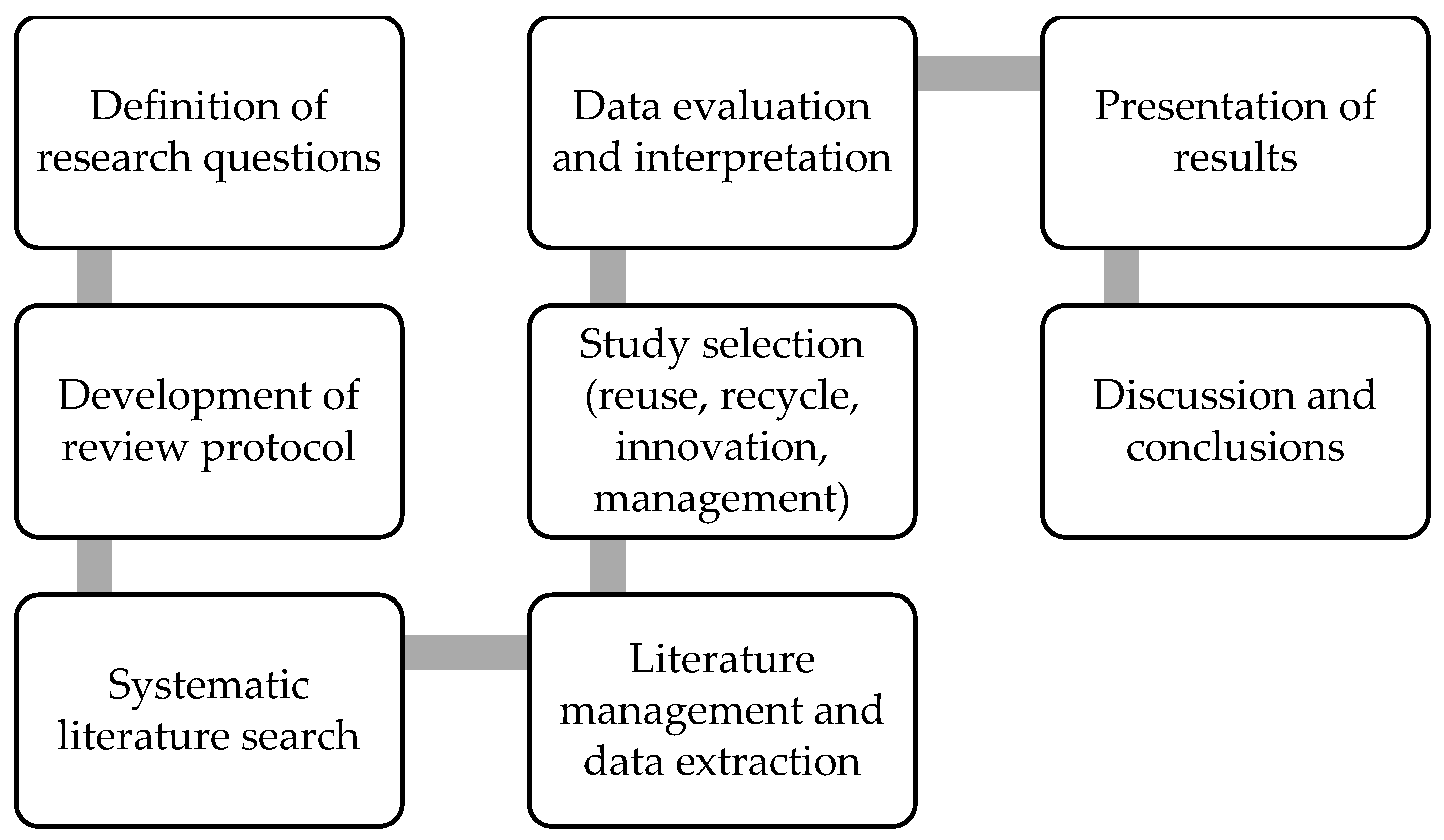
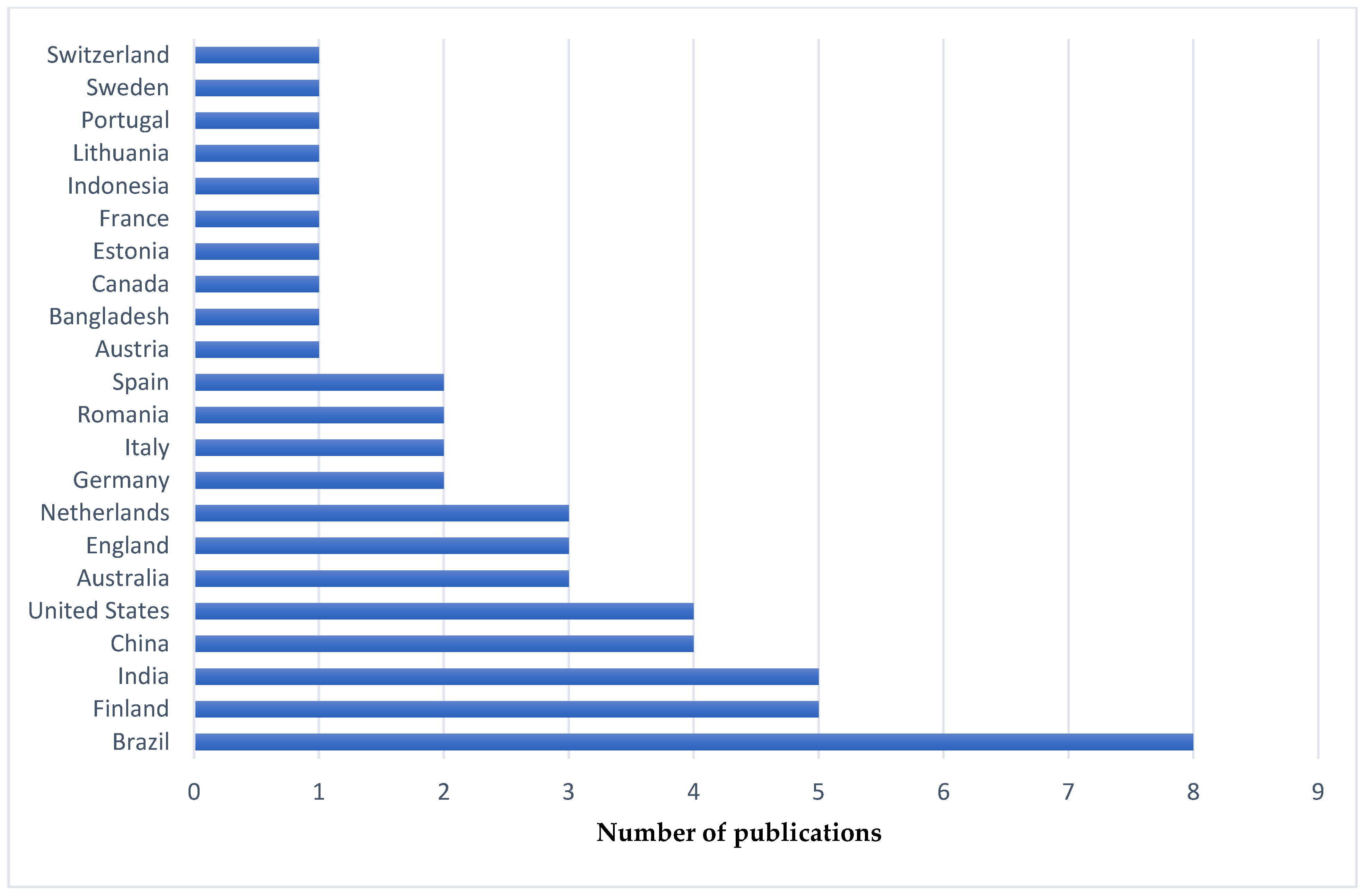

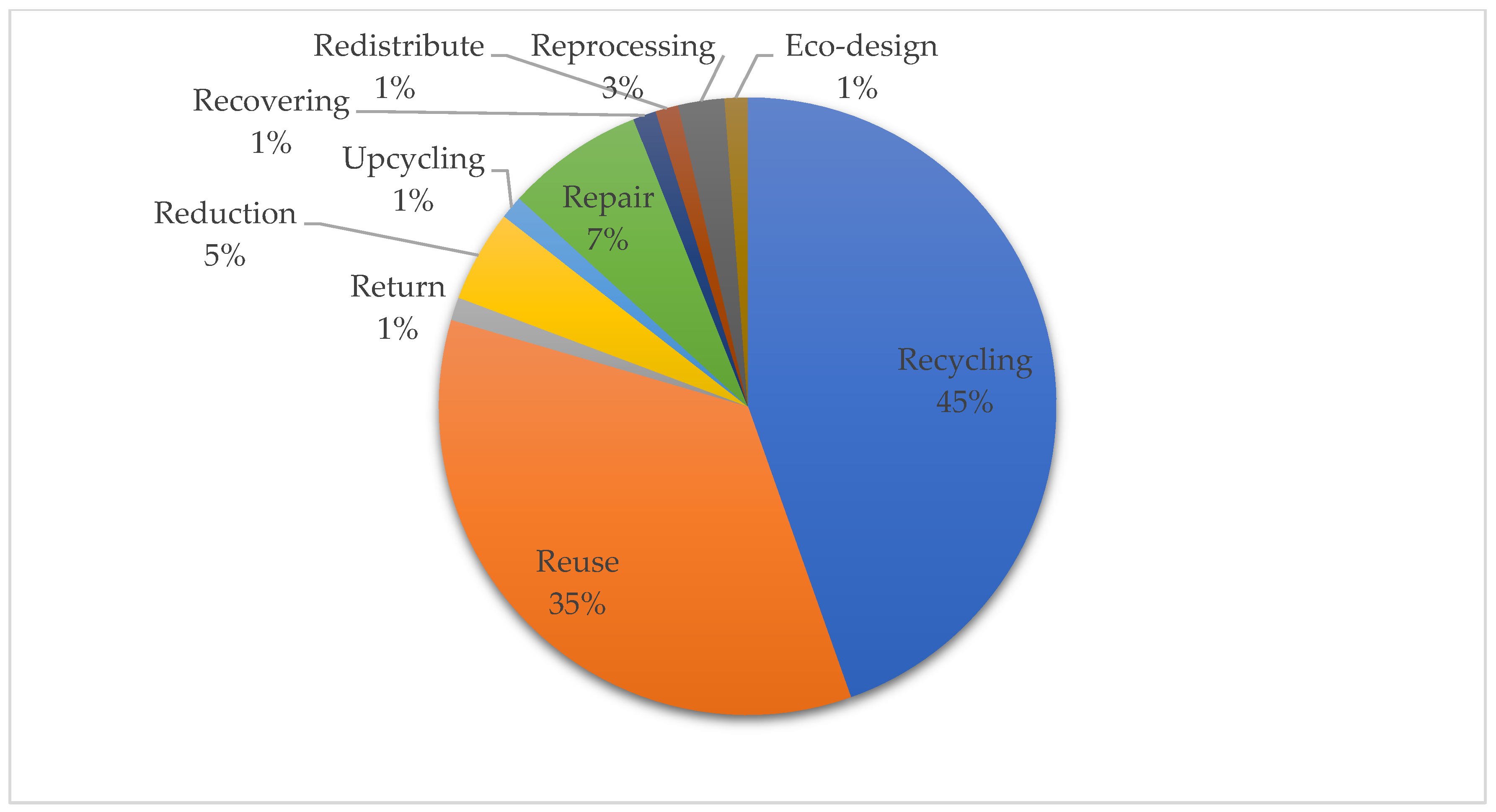
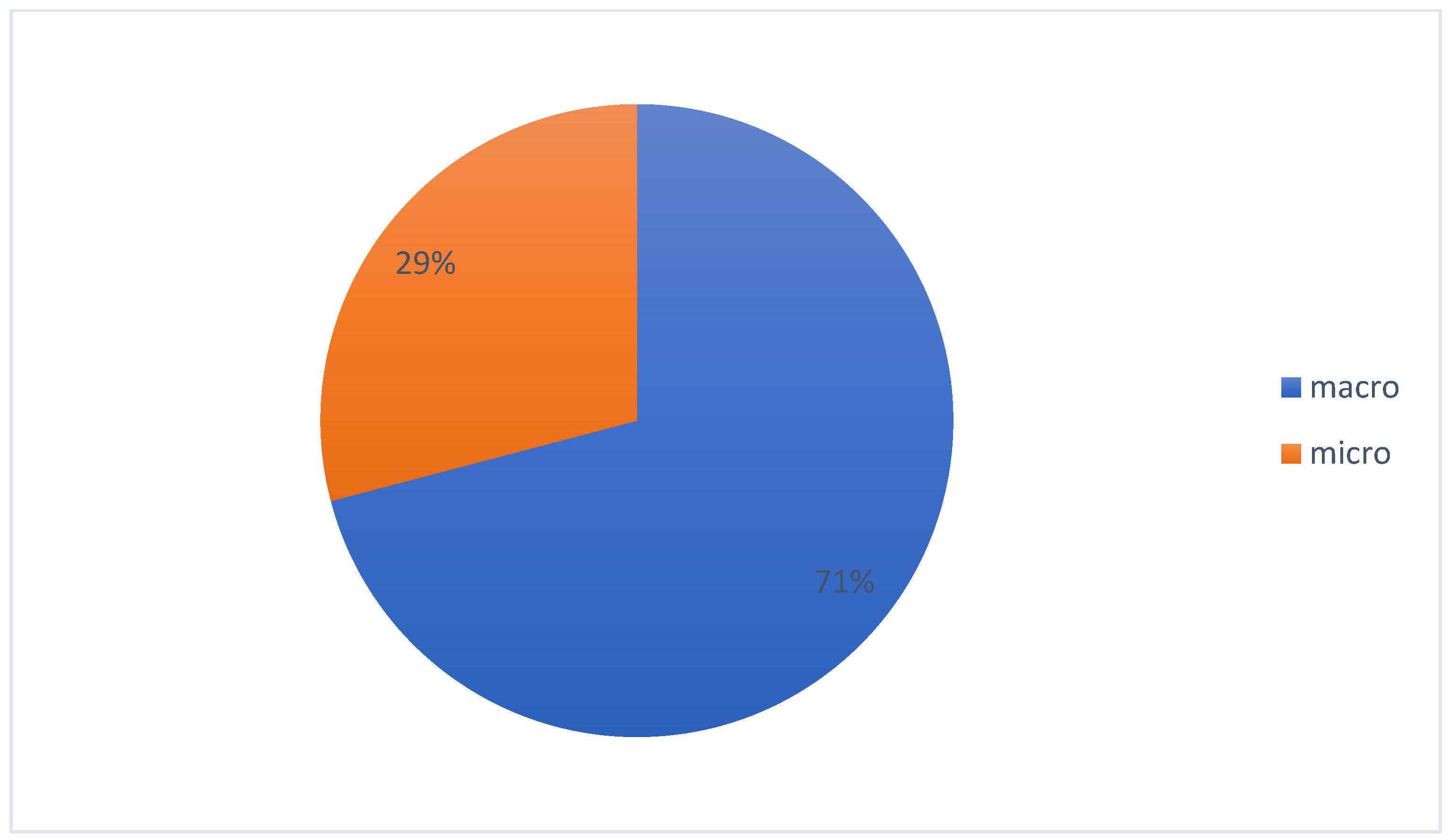
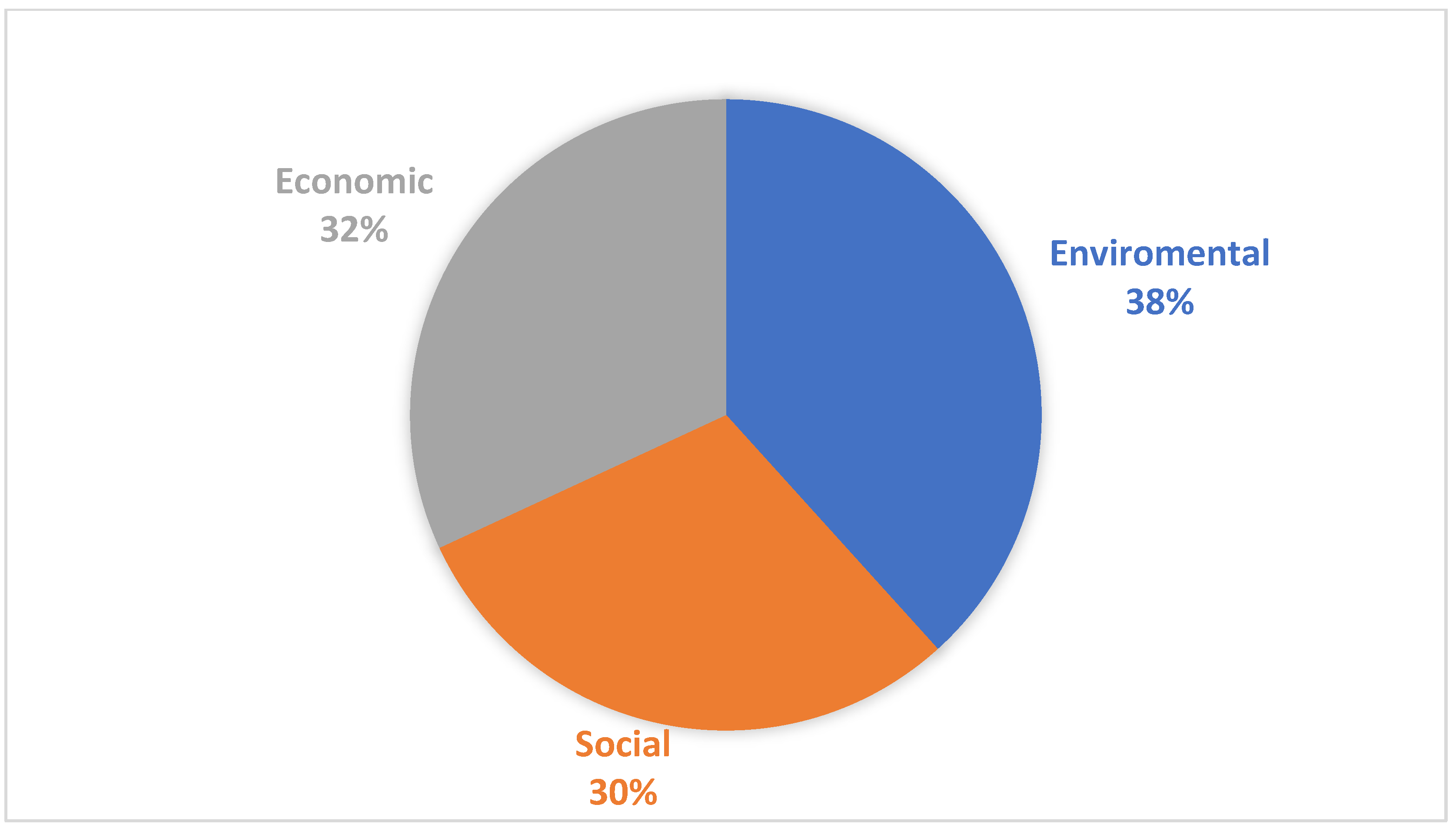
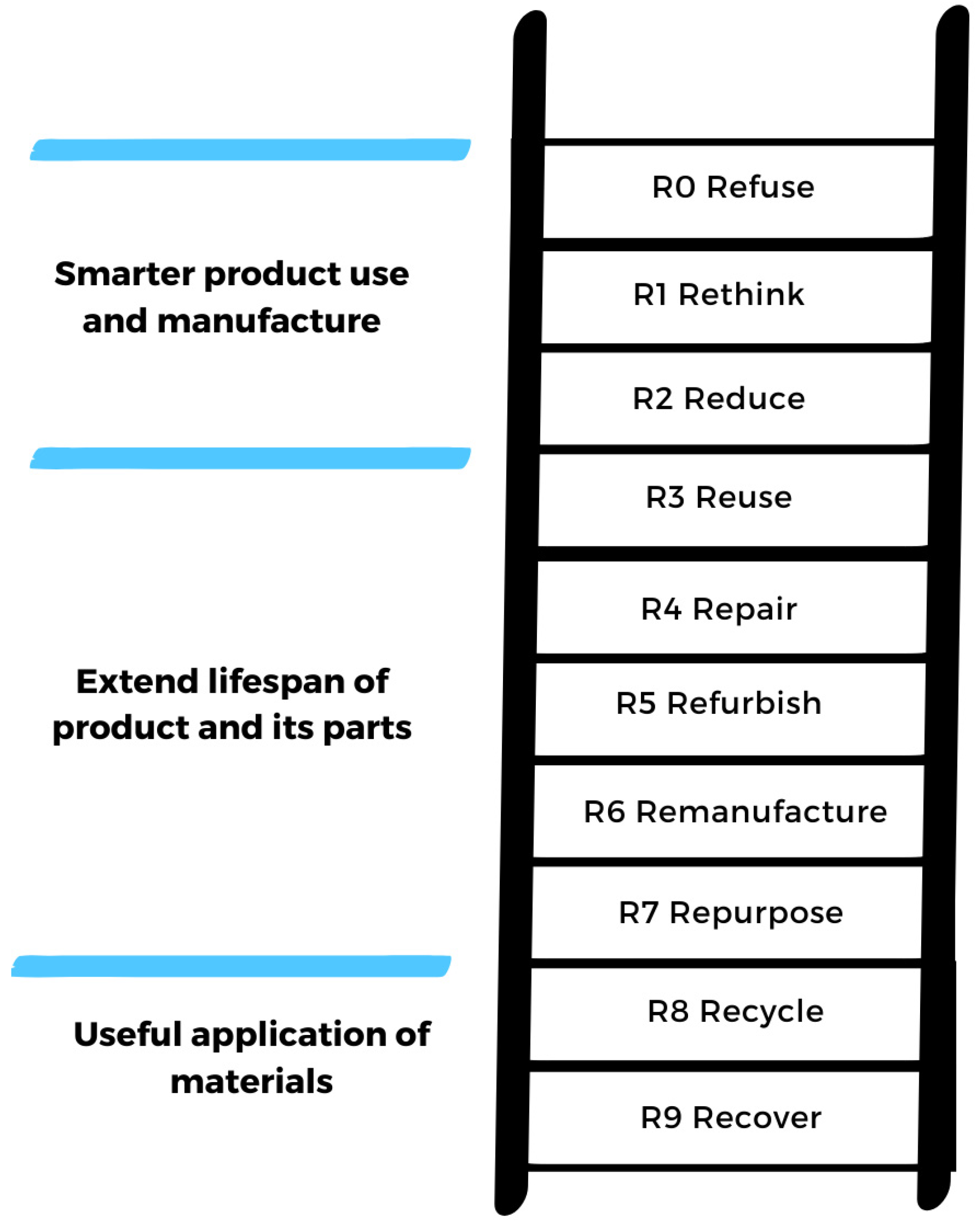
Disclaimer/Publisher’s Note: The statements, opinions and data contained in all publications are solely those of the individual author(s) and contributor(s) and not of MDPI and/or the editor(s). MDPI and/or the editor(s) disclaim responsibility for any injury to people or property resulting from any ideas, methods, instructions or products referred to in the content. |
© 2024 by the authors. Licensee MDPI, Basel, Switzerland. This article is an open access article distributed under the terms and conditions of the Creative Commons Attribution (CC BY) license (https://creativecommons.org/licenses/by/4.0/).
Share and Cite
Ramírez-Escamilla, H.G.; Martínez-Rodríguez, M.C.; Padilla-Rivera, A.; Domínguez-Solís, D.; Campos-Villegas, L.E. Advancing Toward Sustainability: A Systematic Review of Circular Economy Strategies in the Textile Industry. Recycling 2024, 9, 95. https://doi.org/10.3390/recycling9050095
Ramírez-Escamilla HG, Martínez-Rodríguez MC, Padilla-Rivera A, Domínguez-Solís D, Campos-Villegas LE. Advancing Toward Sustainability: A Systematic Review of Circular Economy Strategies in the Textile Industry. Recycling. 2024; 9(5):95. https://doi.org/10.3390/recycling9050095
Chicago/Turabian StyleRamírez-Escamilla, Héctor Guadalupe, María Concepción Martínez-Rodríguez, Alejandro Padilla-Rivera, Diego Domínguez-Solís, and Lorena Elizabeth Campos-Villegas. 2024. "Advancing Toward Sustainability: A Systematic Review of Circular Economy Strategies in the Textile Industry" Recycling 9, no. 5: 95. https://doi.org/10.3390/recycling9050095
APA StyleRamírez-Escamilla, H. G., Martínez-Rodríguez, M. C., Padilla-Rivera, A., Domínguez-Solís, D., & Campos-Villegas, L. E. (2024). Advancing Toward Sustainability: A Systematic Review of Circular Economy Strategies in the Textile Industry. Recycling, 9(5), 95. https://doi.org/10.3390/recycling9050095





